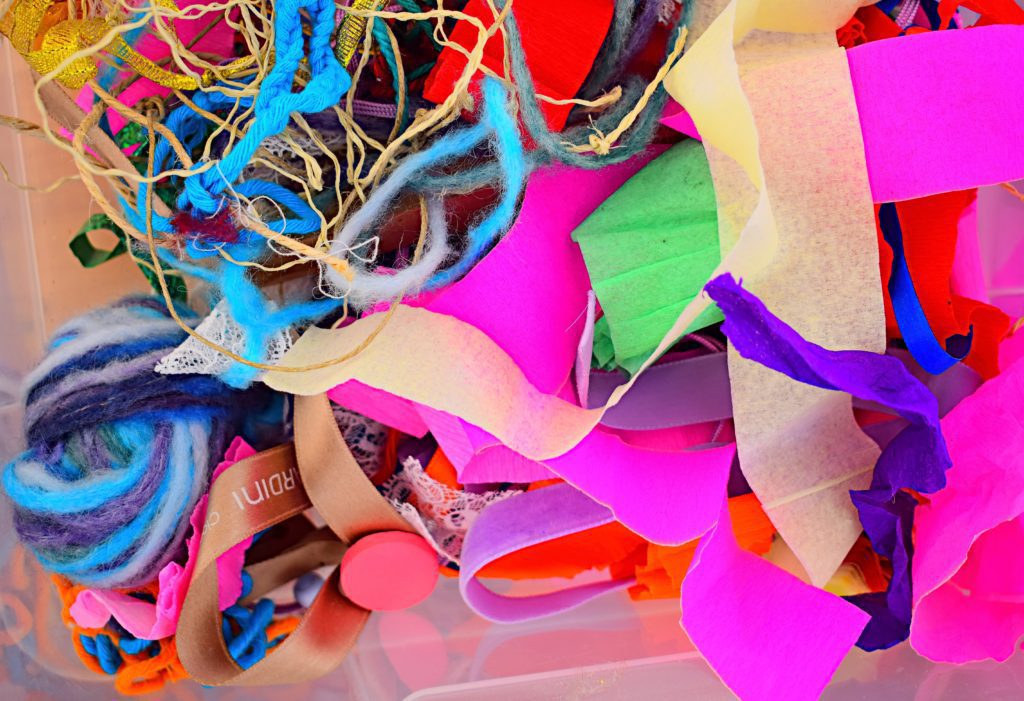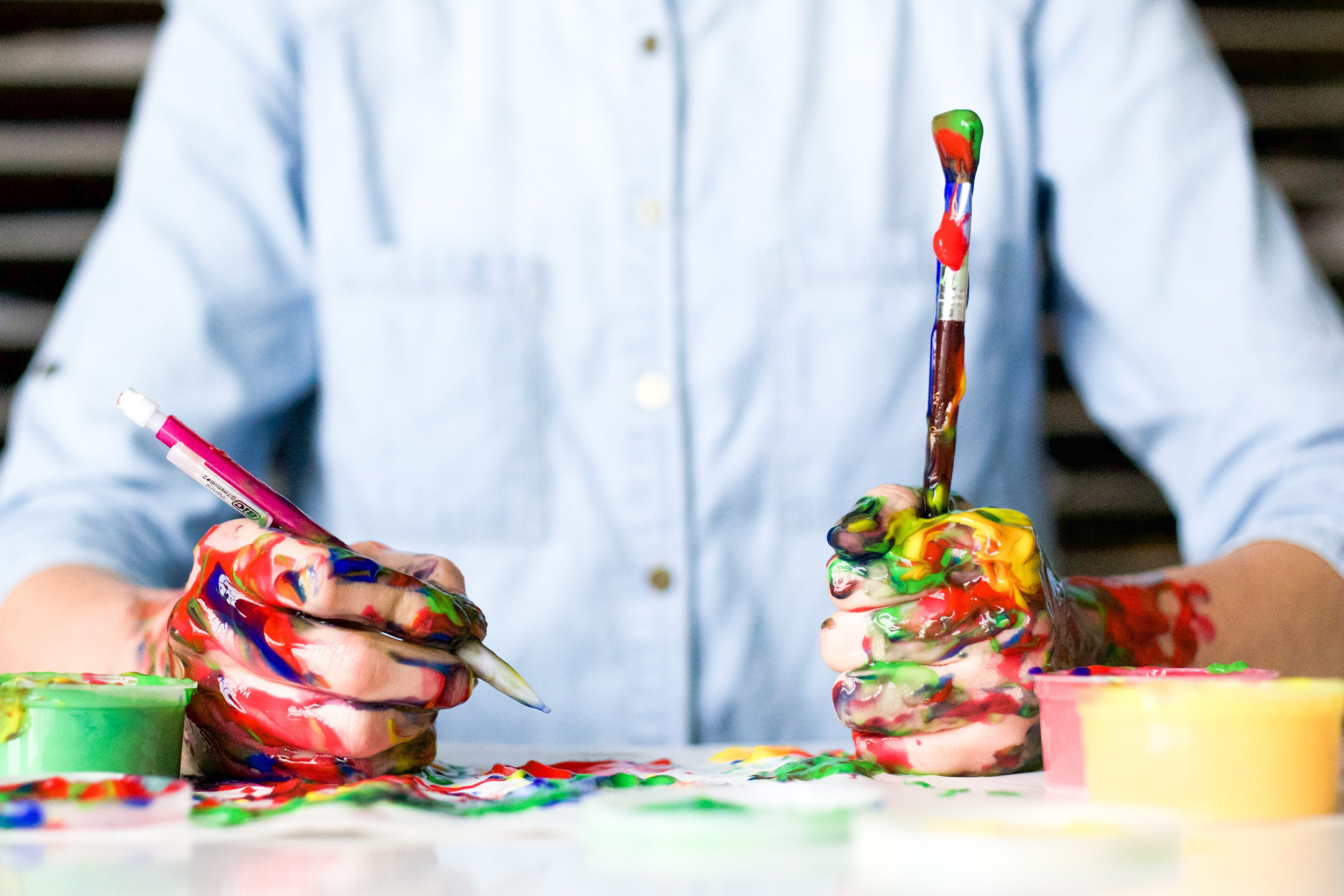Art Supplies for Making Art At Home

A lot of people are asking, how will students make art at home if they don’t have supplies? While this is a valid question, we also need to be willing to ask a few different questions.
When we can’t come up with an answer to a question, that doesn’t mean that there isn’t an answer, often it means that we need to ask a new question. Here are a few new questions to asking.
- What do students have access to at home and how can they create with those things?
- What is the goal of the art making, and what are the different ways that goal can be achieved?
I’ve been reflecting on what art supplies I had access to growing up. While parents could afford to buy me art supplies, and did when I asked, what I remember the most is the closet filled with random things that I used to create.
- There were old calendars that I cut apart and that I used as reference images when I was practicing drawing.
- There were the rice crispy boxes that I looked to, to learn how to draw cartoons.
- The rolls of receipt paper leftover from a family business that I soaked in water, and then used the wet strips to create paper balls.
- Most of what I used and what allowed me to be creative and solve problems, were items that were collected and saved from the trash.
It is nice to have paints, markers, and canvases, but none of those are necessary to create.
Creativity is about constraints. How do we solve a problem? A lack of supplies becomes a creative constraint.
If you want to purchase supplies and need some ideas, I’m sharing below.

Art supplies for the little kiddos: Elementary and under
- Crayons: Get Crayola, they are the best, but don’t feel like you have to get a box with 200 colors. There’s nothing wrong with your child needed to experiment with layering colors.
- Colored Pencils, again you don’t need a giant box, and I would hold off of these until they’re a little bit older, because kids tend to break the tips and go through them quickly. When you do decide to start using colored pencils, get yourself a plastic hand sharpener, electric sharpeners tend to eat colored pencils like nobody’s business.
- Makers, I’d recommend making sure that they’re washable
- Pacon White Easel Roll, 18 X 200 Feet, White (4763)
: 1 because who the heck doesn’t love a giant roll of paper, 2 because it’s great for covering your work space, and 3 it allows your kids to work big. You can also find rolls of paper at most office supply stores and restaurant stores.
- Construction paper: grab a pack with lots of colors
- Plain white drawing paper
- scissors
- glue sticks and elmers
- Crayola 5ct Art and Craft Brush Set
- It’s always a good idea to have some tape near by, it solves almost anything.
Talking about Paint
11. I LOVE using acrylic paints, Liquitex Basics Matt Acrylic Color Primary Paint Set with kids of all ages, because it’s thicker and just better. But it’s also not know for it’s ability to come out of clothes ( it’s not washable) , so purchase at your own risk. OR buy tempera paint. You should be picking up a theme here, you don’t need to buy all of the colors, red, yellow, blue, black, and white will do the trick, and you’re child will start to learn about how to mix colors. ( Egg cartons, or wax paper are great for kids to use to mix paint)
12. Watercolors are fun and not too messy. The main thing is the paper, the thicker the paper the better. Watercolor paints are also pretty cool painted onto coffee filters. You can also experiment with making your own watercolor paints by taking old markers and allowing them to soak in a jar of water, you’ll be amazing at the amount of color that appears.
Things to collect but not buy
- magazines, great for collage
- old calendars, the pictures are great to use for collage, but also can work well as reference images for drawing
- scarp paper
- rubber bands
- plastic containers
- cardboard
- lids from soda bottles
- bottles
